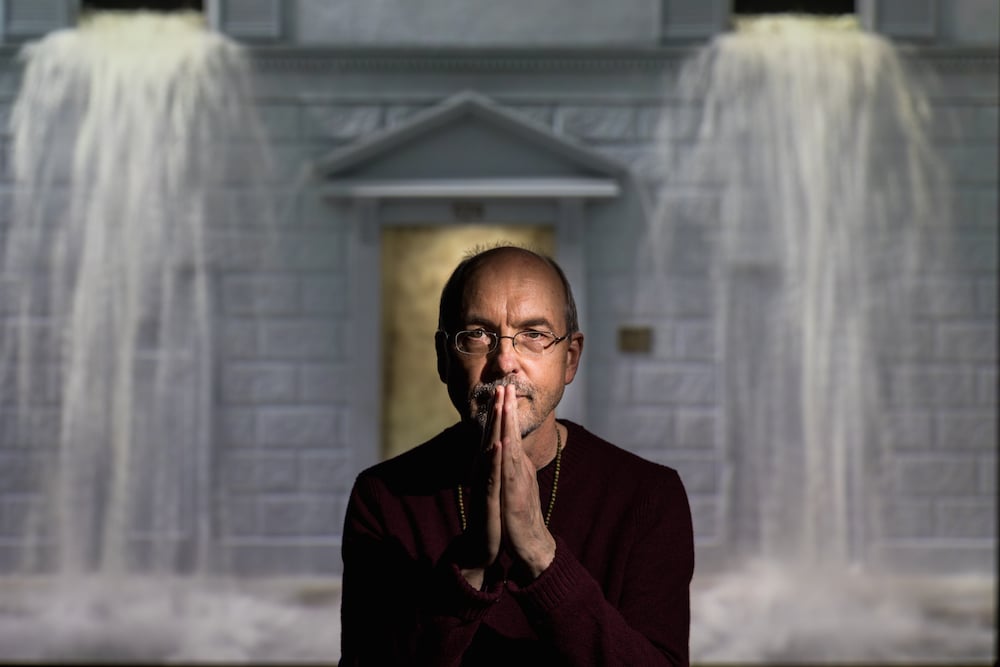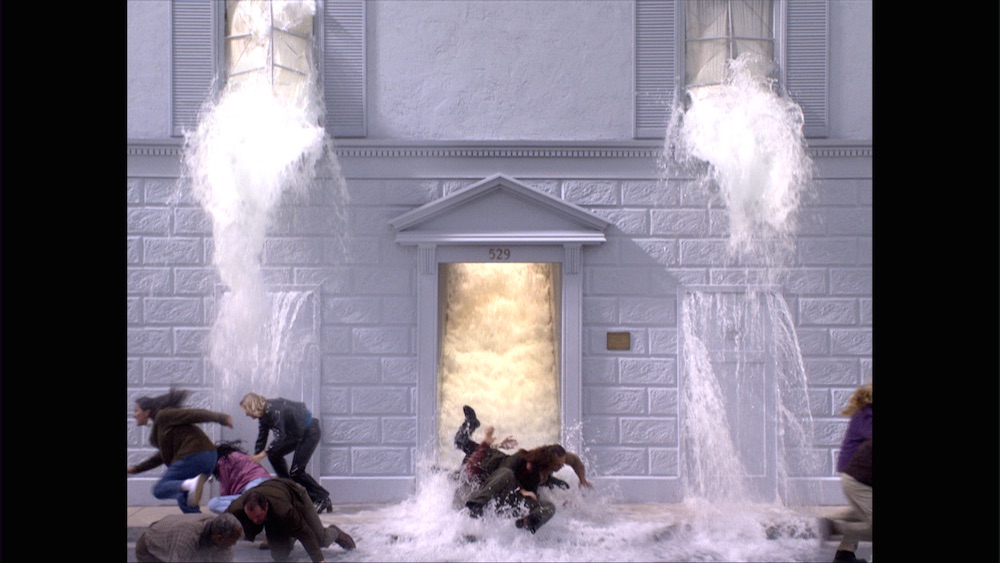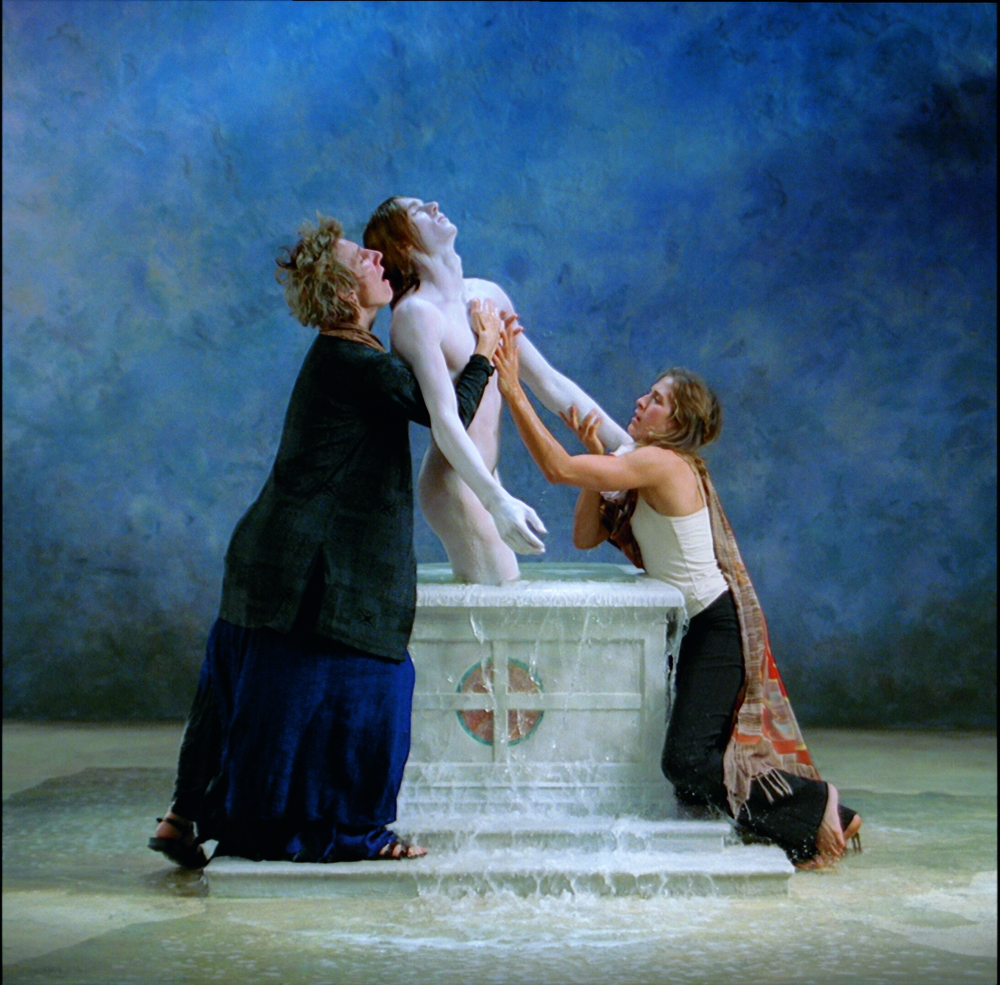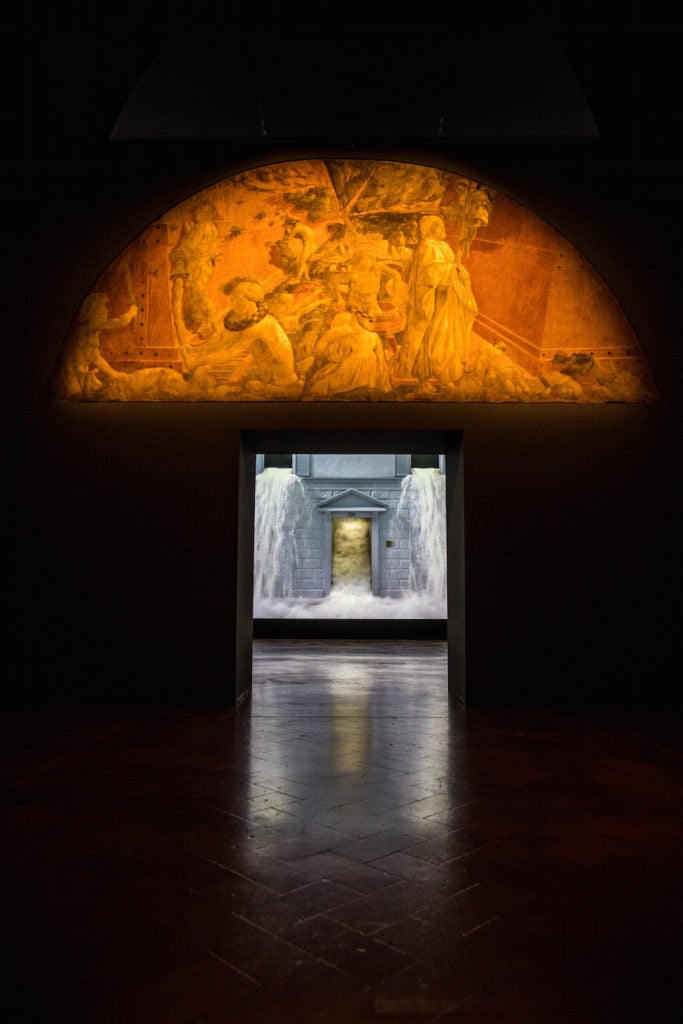Reviews
Bill Viola Shows Among the Old Masters in Florence—But Is It a Match?
A city-wide exhibition places video works by Viola next to Renaissance pieces.

A city-wide exhibition places video works by Viola next to Renaissance pieces.

Hettie Judah

Bill Viola is big on Florence, and big in Florence. The video artist spent 18 months working in the city in his early twenties, and the Renaissance artworks he encountered, and the integrated role they played in his daily rounds, have had a profound impact on the works he has created, particularly in the last two decades.
It was in the 1990s, following the death of a parent and the birth of a child, that Viola thought back to the humanity and emotion that distinguished the works of the Renaissance artists from those of earlier generations. Using state of the art high speed and high definition cameras, works such as Emergence (2002) revisit themes of death and rebirth (in this case, a deathly Christ-like figure emerging from a well flanked by two mourning women).
This month, a handful of historic institutions in Florence and beyond—including the Museo di Santa Maria Novella and Gallerie degli Uffizi—are showing video works by the American artist alongside sculpture and painting made some five centuries earlier.

Installation view of Bill Viola’s exhibition at the Palazzo Strozzi. Photo ©Alessandro Moggi.
At the Palazzo Strozzi, the exhibition “Electronic Renaissance” dedicates its upper galleries to Viola’s dramatic, emotionally saturated video installations made since 1995. Pride of place is given to two vast installations from the 2002 Going Forth By Day series: The Deluge, in which a building and surrounding population succumb to a vast flood of water, and the 36-foot-long The Path, in which a procession of some 150 extras walk through a forest clearing. These are shown alongside works from the 15th and 16th centuries that the artist has cited as explicit points of reference.
Personal response to Viola’s work aside, the exhibition of contemporary time-based works alongside 500-year-old paintings and sculptures is not unproblematic. This is the kind of exercise that can too easily lead to monocles tumbling into soup or extreme jerks of the knee.
While we can perhaps all safely agree that the exhibition title is practically designed to set teeth on edge, placing prejudice aside, there is much to be learned here, particularly if we acknowledge at the outset that not all visitors to Florence’s institutions are doing so in the enthralled spirit of an art historian.
Viola’s Observance (2002)—a procession approaching an unseen object, responding with grief and despair—is installed in a corner niche in the Museo dell’Opera del Duomo in a gallery that also houses Michelangelo’s unfinished Pietà Bandini (1547-55). A visitor that referred enthusiastically to the Viola work as a “contemporary masterpiece,” drawing comparisons with the Michelangelo, provoked some amply deserved nervous coughing on the part of the museum’s curator Timothy Vernon.

Bill Viola, The Deluge (Going Forth By Day) (2002). ©Long Beach, CA, Bill Viola Studio.
Words like “masterpiece” are bandied rather casually in these parts, but any suggestion that the curators are inserting Viola into a pantheon alongside Michelangelo, Botticelli and others whose work has inspired him is far fetched. The intention, surely, is to make a connection between works of some five centuries past and the contemporary experience; a reminder, too, that Florence itself is not a museum, but a living city.
Whether or not we want this connection made is another question. As Vernon points out, visitors buying a ticket to his museum are not buying a ticket to see works by Bill Viola: they’re buying tickets to see works created in the Duomo’s workshop.
With this in mind he has installed the two video works at this museum unobtrusively, preserving the sightlines of existing displays: one can look at Donatello’s Saint Mary Magdalene as Penitent (c.1455) without being aware of Viola’s Acceptance playing in an abutting space.

Bill Viola, Emergence (2002). Performers: Weba Garretson, John Hay, Sarah Steben. Photo ©Long Beach, CA, Bill Viola Studio.
While these works might not be overly distracting in their placement, the question of what they bring to the museum is less clear. The museum is no dusty half-forgotten institution. Its building has undergone a dynamic recent conversion and while the works may be centuries old, their mode of display is distinctly contemporary.
It is also a site of quiet, stillness, and thought. A fluorescing screen and moving images in such a place disrupt the balance and they way visitors will survey a space: carved marble can’t compete with the glow and motion. Video is greedy for attention, particularly when, as here, it has a strong suggestion of narrative: Observance is 10 minutes long, Acceptance, eight. Casual observation of museum visitors suggests that few works in the permanent collection were afforded that kind of extended focus.
A different kind of disruptive impact was visible at the Santa Maria Novella, where Tempest (Study for The Raft) (2005) was showing in the chamber alongside Genesis frescos by Paolo Uccello. The Santa Maria Novella museum is housed in a great devotional complex, in which every cloistered arch, engraved stone and stained window bears evidence of an artist’s hand.
It’s dimly lit—the works here are fragile and ancient, and this is a site of religious observance—so placing a video, even a small one, in such an environment, immediately makes it the center of attention. The Viola distracted, the Uccellos were ignored.

Installation view of “Bill Viola.” Photo ©Alessandro Mogg.
A blank space on the wall of the Santa Maria Novella showed where Uccello’s The Flood and Receding of the Waters once hung. In a kind of swapsies for the Tempest, the Uccello was installed in Viola’s exhibition at the Palazzo Strozzi, topping an archway above the entrance to The Deluge (2002). And something interesting happened with the transfer. At Santa Maria Novella, this fresco panel was one among many—an earthy-toned work from another era, its reading demanding attention granted grudgingly, if at all, by museum goers fatigued by marvels. At the Strozzi, in a carefully lit room alone but for the video work (visible and huge beyond the arch), it glowed and fascinated.
It is a tribute to Viola’s technical team and their sensitivities to nuances of architecture and lighting that works installed in the Strozzi’s spaces by Masolino da Panicale, Pontorno, and Lucas Cranach looked similarly captivating. Here, it was they that grabbed the attention from Viola—the stately pace of slow-motion videos such as The Greeting seemed oddly sluggish beside works such as Pontorno’s The Visitation (1528-9), which offered its whole mysterious self in a single captured moment. Shown as a rare half-dozen works, vividly lit, and given the generous space so casually afforded to contemporary art in its cavernous exhibition spaces, they needed no ambassador or artist interlocutor to thrive.
“Bill Viola: Electronic Renaissance” is on view at Palazzo Strozzi, Florence, and other venues across the city from March 10 – July 23rd, 2017.